 | |||
 | |||

|
From Williamsburg Bridge by Edward Hopper (1928) Painting location: #202, #204, #206, and #208 Delancey Street, between Ridge Street and Pitt Street, New York City From Williamsburg Bridge is one of Edward Hopper's most famous paintings and it can be found at the Metropolitain Museum of Art in New York. About the painting, the museum website says,"Hopper's focus is not the imposing structure of the bridge itself, but the more mundane view of the adjacent neighborhood." Here's a copy of the painting. It shows the top of four buildings as seen by the artist from the Williamsburg Bridge. The silver horizontal supports in the front give the primary clue as to the location, as we shall see. 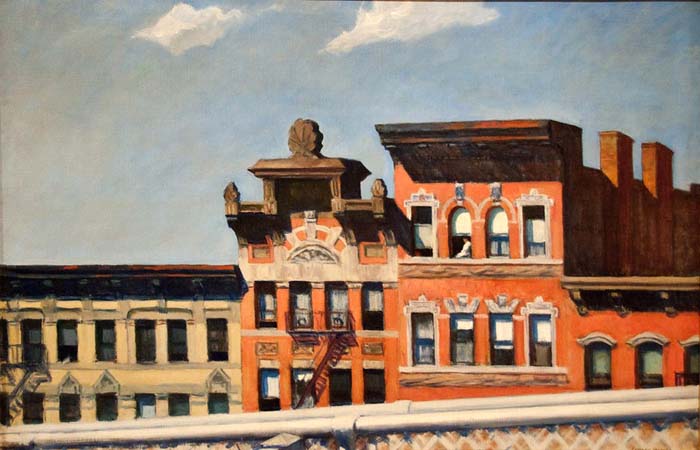
The research and discovery of this PopSpot was the work of Marie Fotini, from Nîmes, France, the "Senior European Correspondent" to Popspots, who has worked on many other PopSpots with me via email. You will see her colorful Photoshopped illustrations throughout the entry. Marie is a huge Dylan and Hopper fan with an eagle eye for catching small matching details in photos. Merci Beaucoup, Marie! Here's a close shot of the tops of the original buildings. The picture comes from new trove of photos placed on the New York City Municipal Archives website. 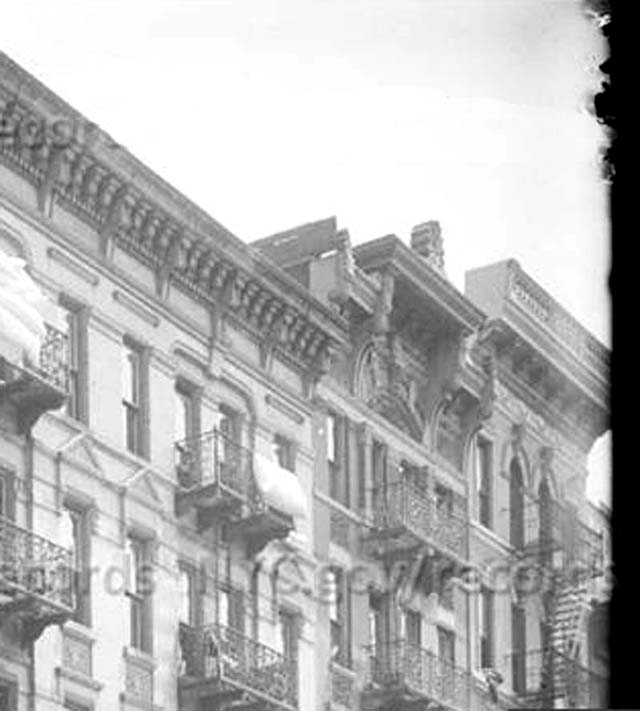
Here they are in comparison, so you can see them together. 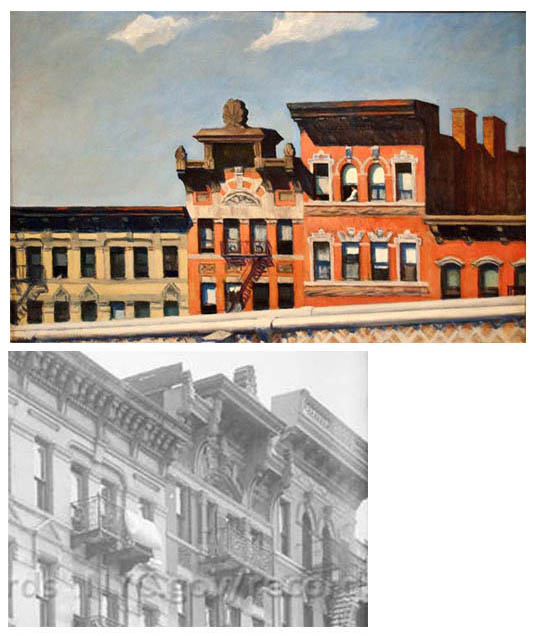
Here are the details Marie found that matched from the painting to the photo. 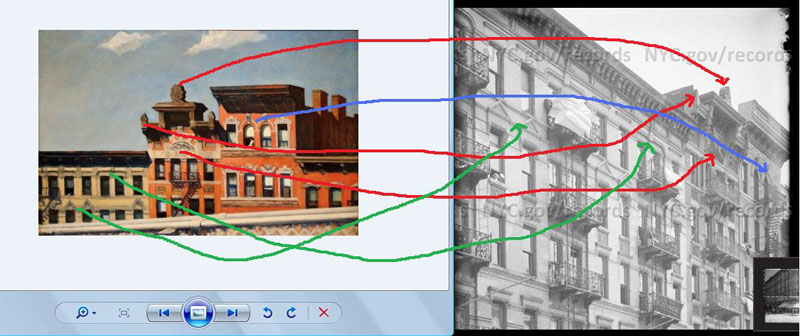
This is a wider shot of the buildings. 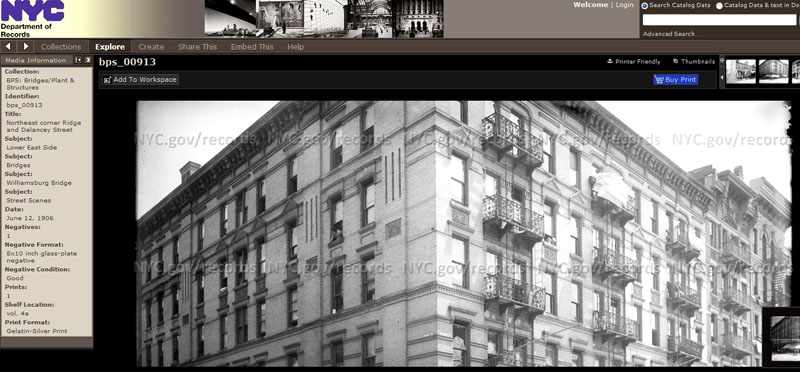
Marie zoomed in to see the distinctive floral-shaped vertical decorative element on top of the middle building. To get to this she had to first look at numerous other buildings alongside the bridge. . 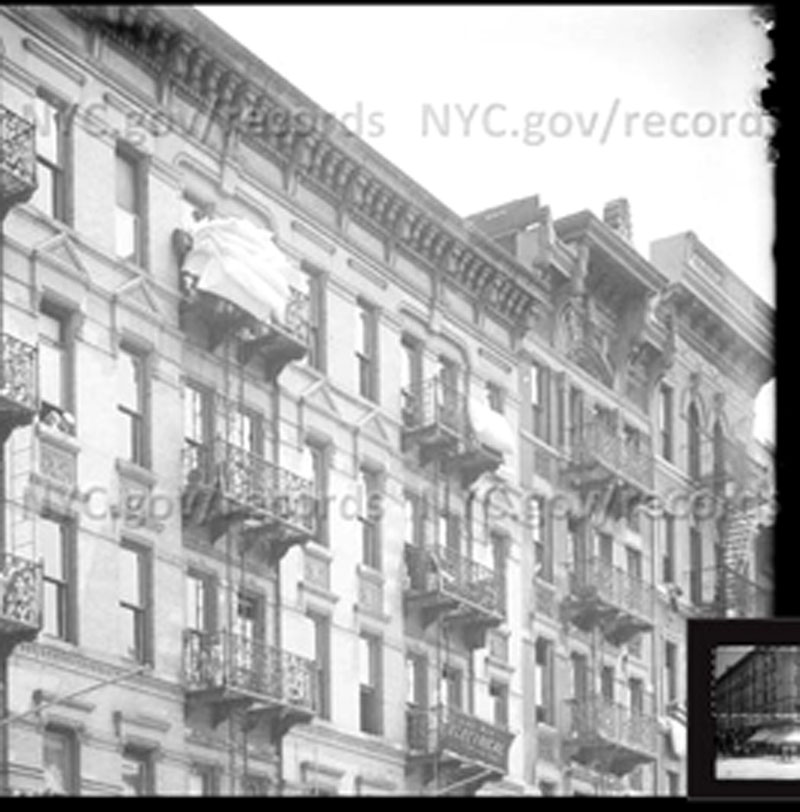
Here are photos looking at each of the building separately. First, the left building... 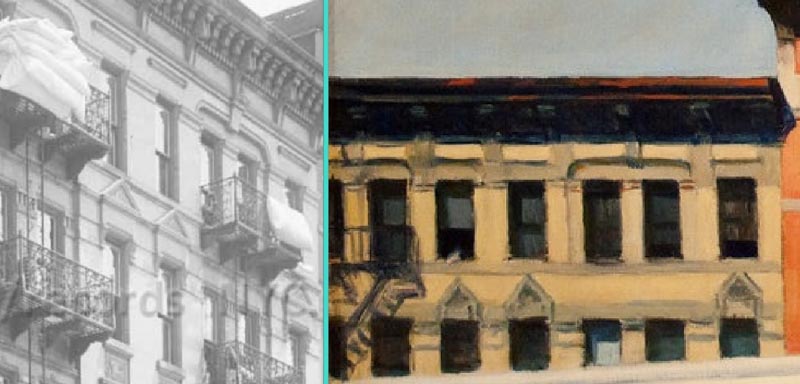
....then the center building... 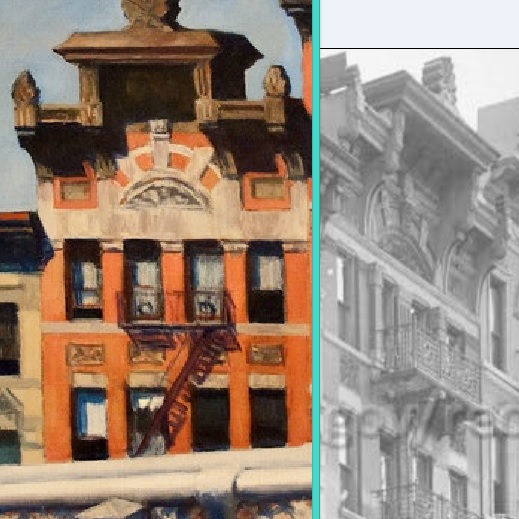
...then the right building. In this one, notice how Hopper took out the fire escape, but added a woman in the window. (Of course, she's gong to be in trouble now in case there's a fire!) 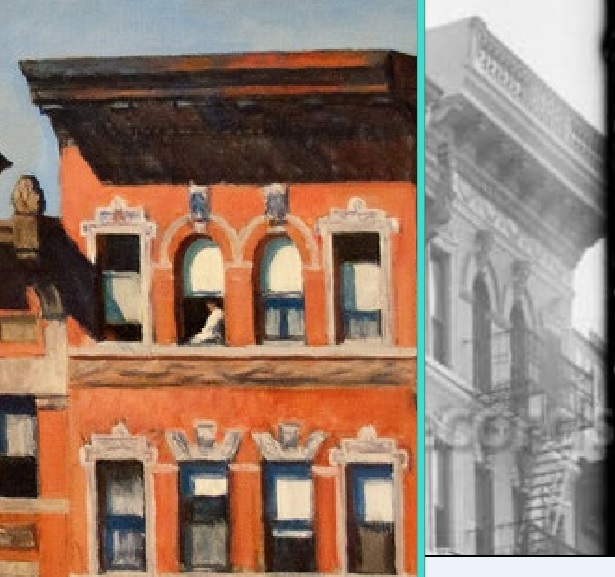
Here Marie compared the real life fire escapes and balconies to those of the painting and also to Hopper study for the painting. Hopper removed some of the balconies and fire escapes for effect. 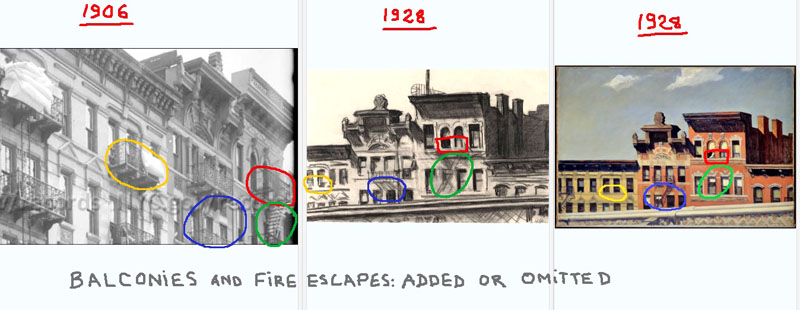
The map below shows where the location of the painting can be found. Because the railing in the front of the picture rises to the right, the painting had to be either be on the north side of the Manhattan part of the bridge, or the south side of the Brooklyn part of the bridge. Using Bing's Eye View to look at the locations, it seemed more likely to be on the Manhattan side. Plus, it would have been a shorter bus ride for Hopper, who lived abut a mile away in Greenwich Village. 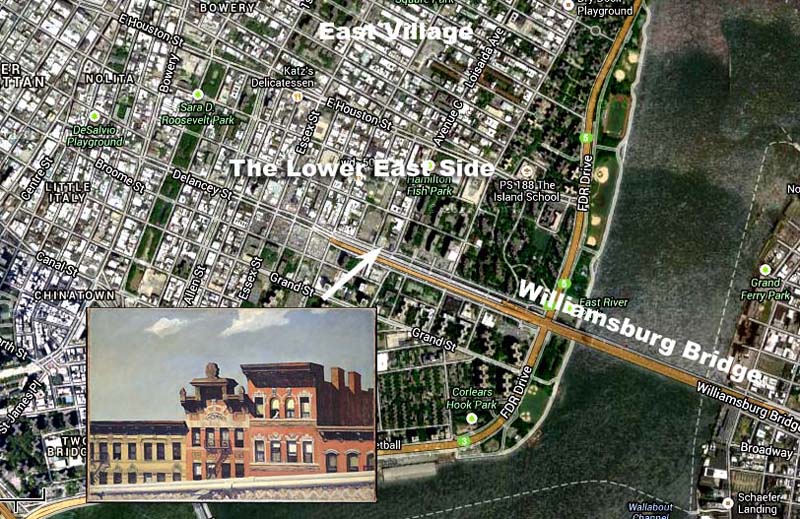
Here's an old postcard that shows the approach to the Williamsburg Bridge. Hopper would have painted the scene from the walkway where the people are walking. The buildings are offscreen to the left. 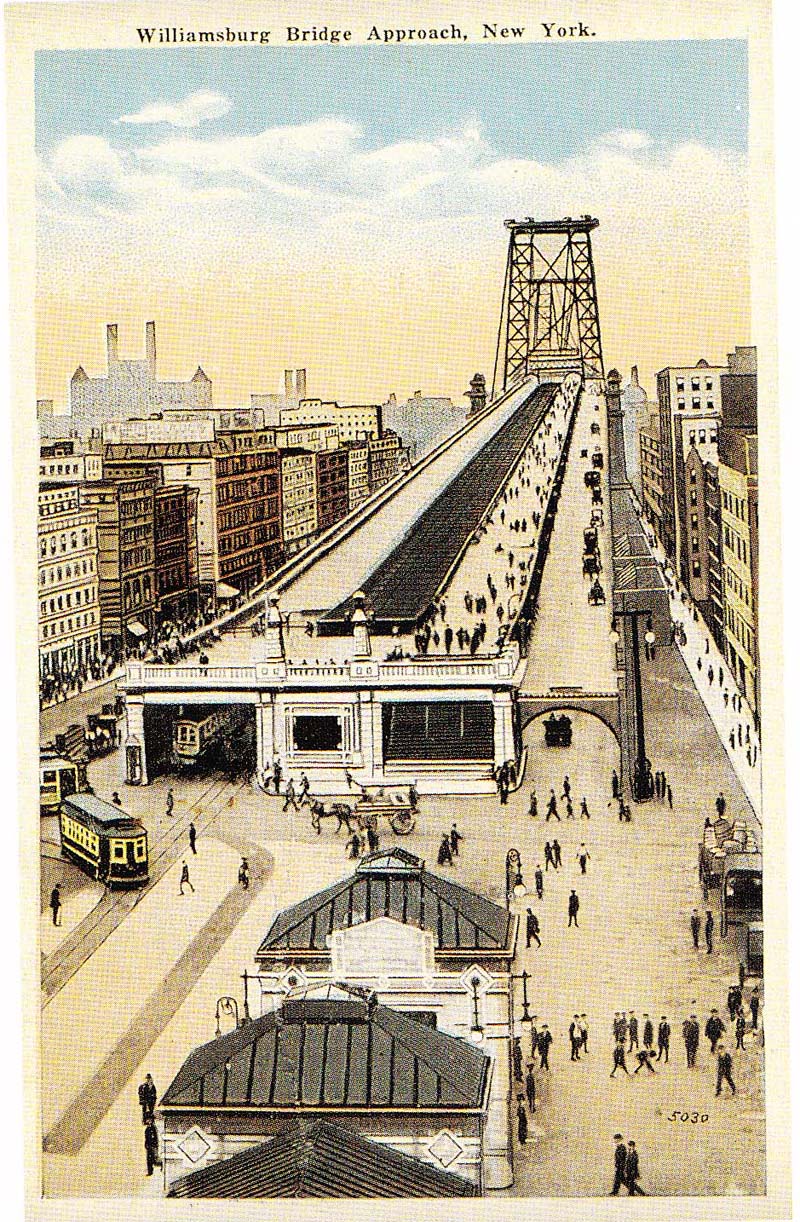
Here's a photo of the same scene from back in the day. 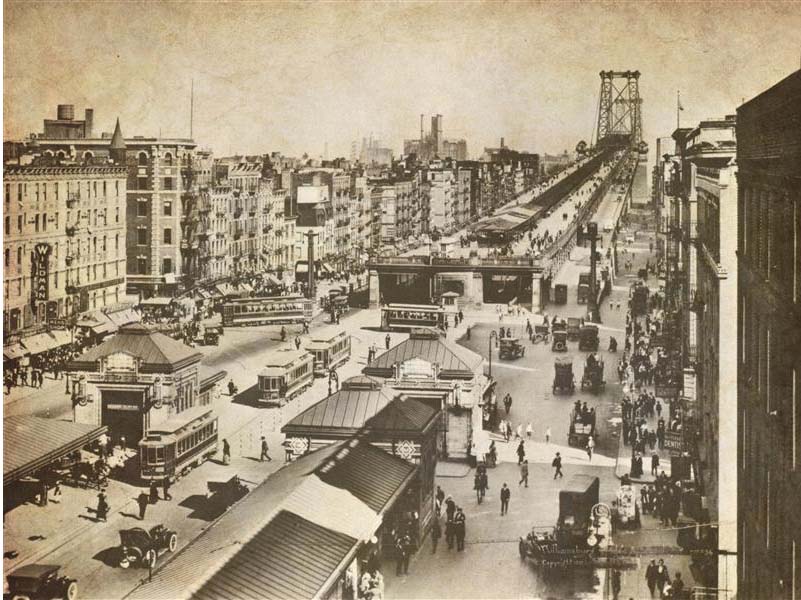
In this photo I've circled the building that Hopper drew. 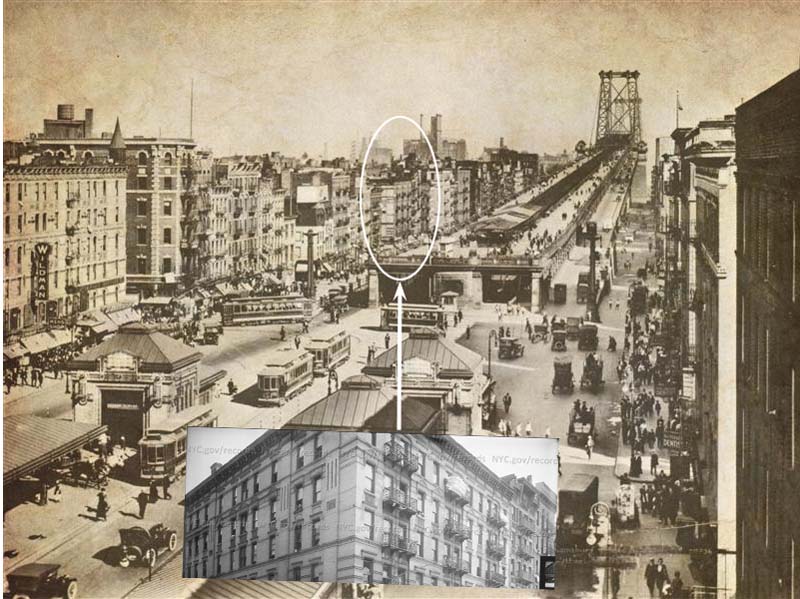
He only had to walk about 100 yards (91 meters) up the bridge. (Note: In this 1955 photo the distinctive building (#204) with the decorative element sticking up from the roof in the middle of Hopper's drawing has already been taken down.) 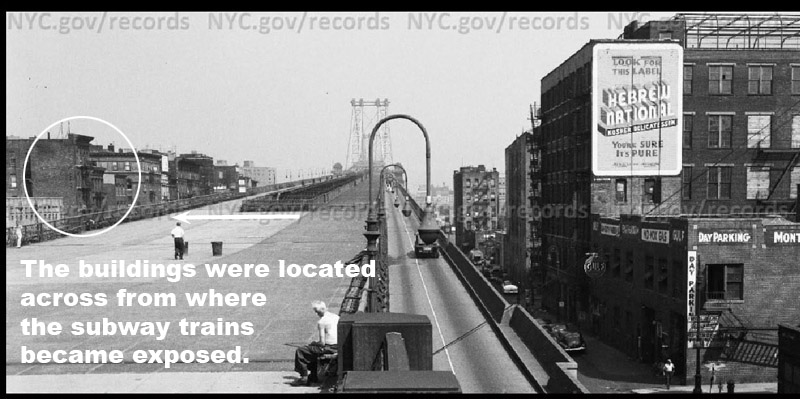
For film fans, here are the Hopper buildings as seen in a scene from director Jules Dassin's "TheThe Naked City from 1948. 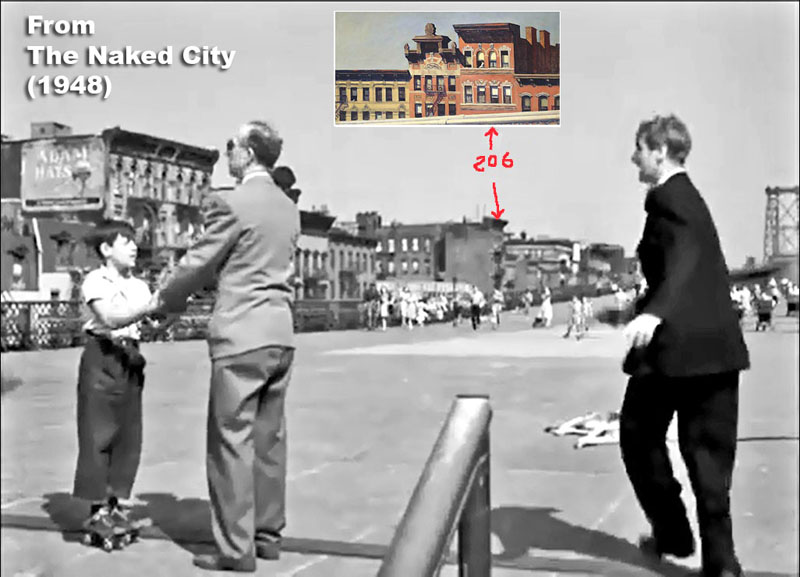
And, moments later in that movie, one of the stars (Don Taylor), chasing the bad guy, passes right by where Hopper would have stood while doing his early drawings for the painting, which he would later finish in his Greenwich Village Studio. 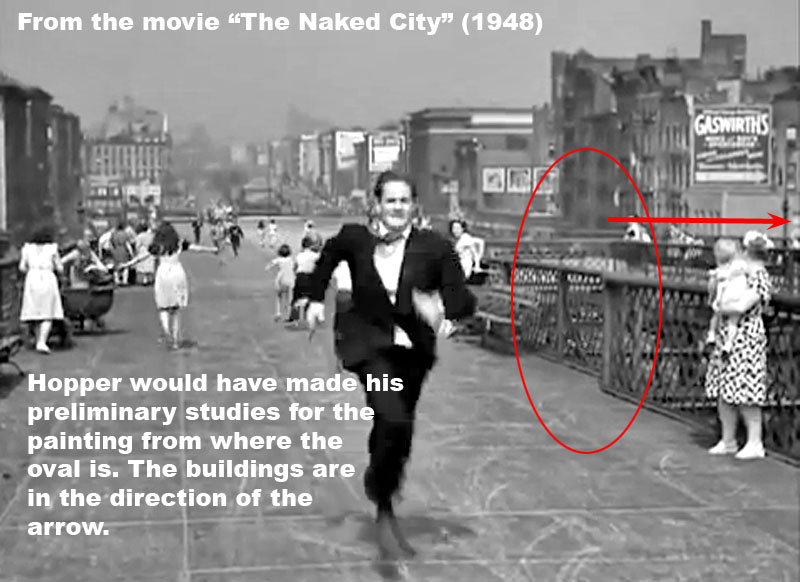
Here's the scene from above. The Hopper buildings (indicated) are located between Ridge Street and Pitt Street along Delancey Street, which runs along both sides of the Williamsburg Bridge approach. 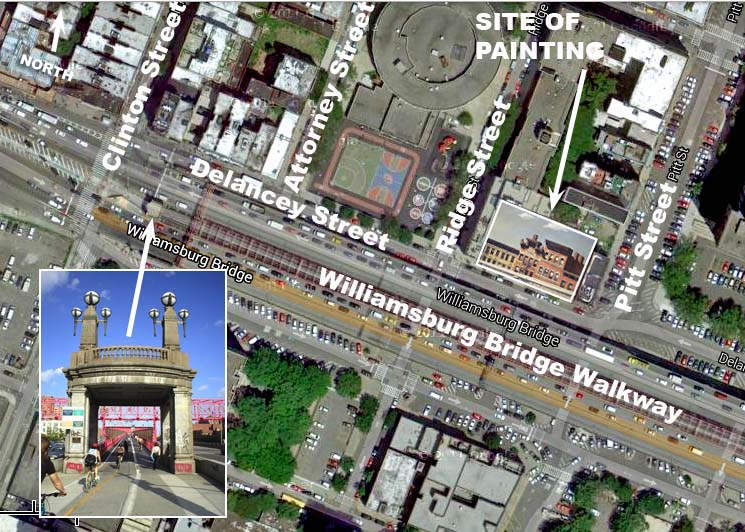
You can match up the building's street number with a Sanborn (fire insurance company) Map from that era. Notice how, on #206, for instance, how the Sanborn map indicates that it has 6 floors ("6S = 6 stories"). 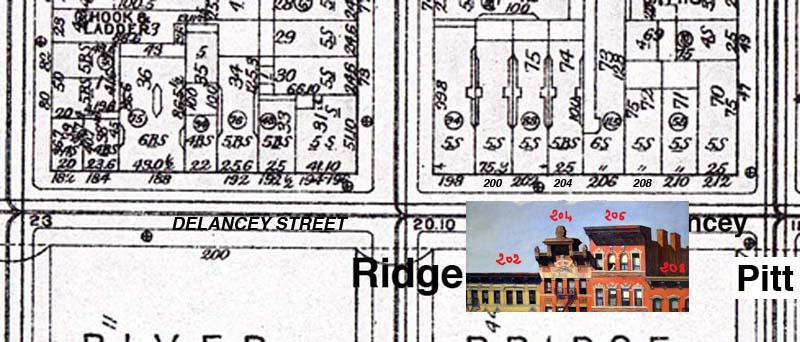
Here's another photo from the NYC Municipal Archives. This gave Marie a major clue in finding the location. 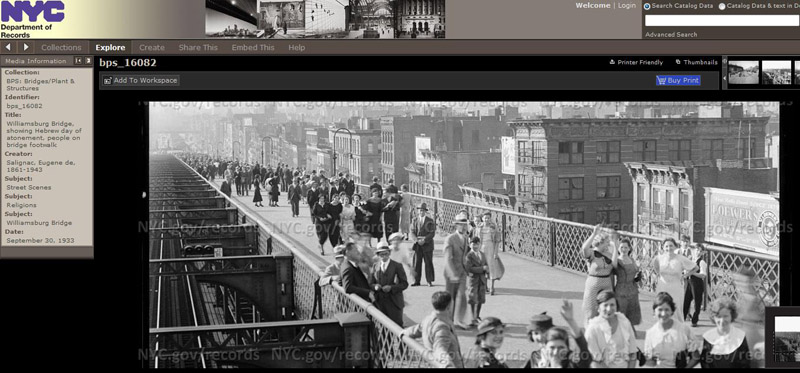
She noticed that the horizontal silver bands in the front of Hopper's drawing were not the large supports holding up the bridge from the towers, but instead were the handrails of the walkway. Larger silver "connectors" about 6 inches long (also seen in Hopper's drawing), joined the handrails." 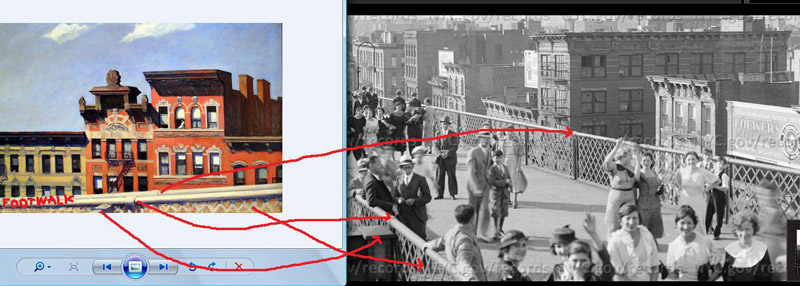
She also noticed these square, somewhat pyramidal-shaped architectural elements (circled below) next to the handrails (they were caps to the ends of the crossbeams). The prominent placement of one of these in the foreground of Hopper's drawing indicated that Hopper was standing across the subway tracks when he painted the photo. The effect was like a zoom lens, compressing the entire 20-foot wide walkway into what looks like two parallel handrails. 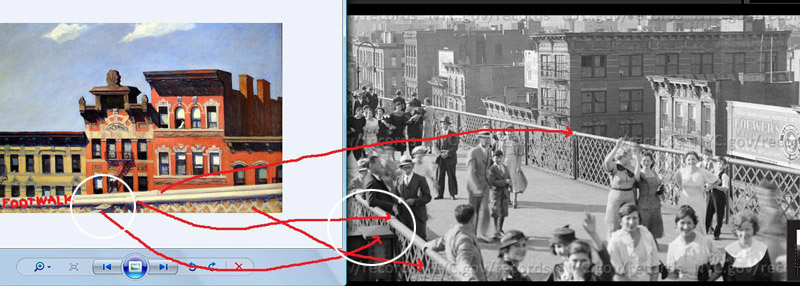
Hopper would have made his sketches from the left walkway in this picture, compressing the right side. But since the buildings in Hopper's painting rose above the railing, Marie knew the setting would have to be further down the bridge, near the base, to where the bridge height descends to just below the level of the rooftops of the tenements. 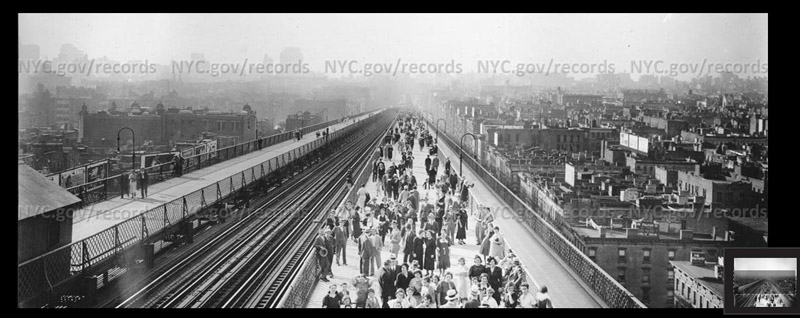
If you do a Google Street View of the bridge, you can pretty much get to the place where Hopper was standing. The old public walkways are gone, revealing wider roads beneath them, and there's a new public walkway/bikeway above the subway train tracks in the middle. 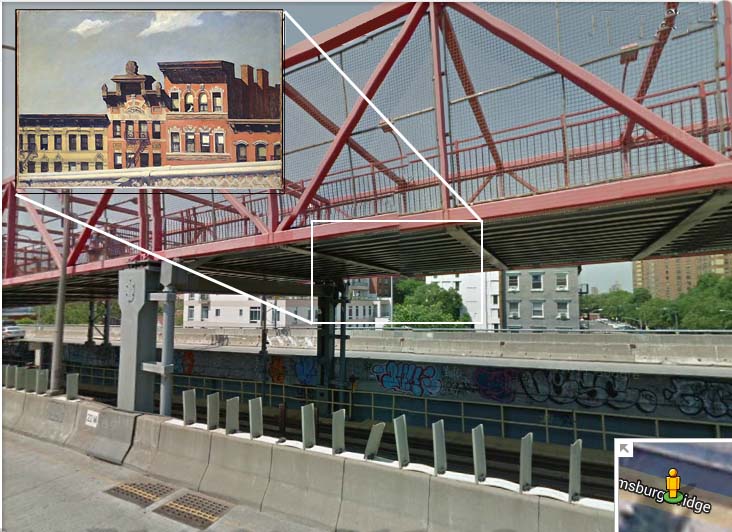
Here's the scene from Bing's Bird's Eye View. Where the buildings were are now are mostly empty lots, with a large building to the left. 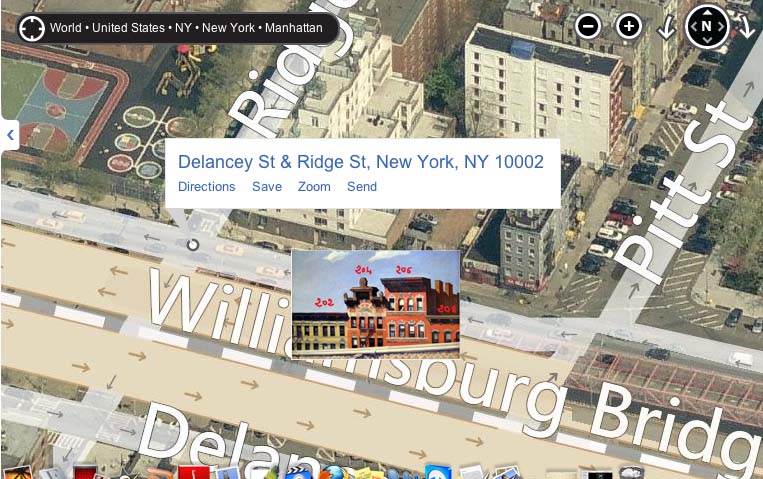
Here's a clearer view. 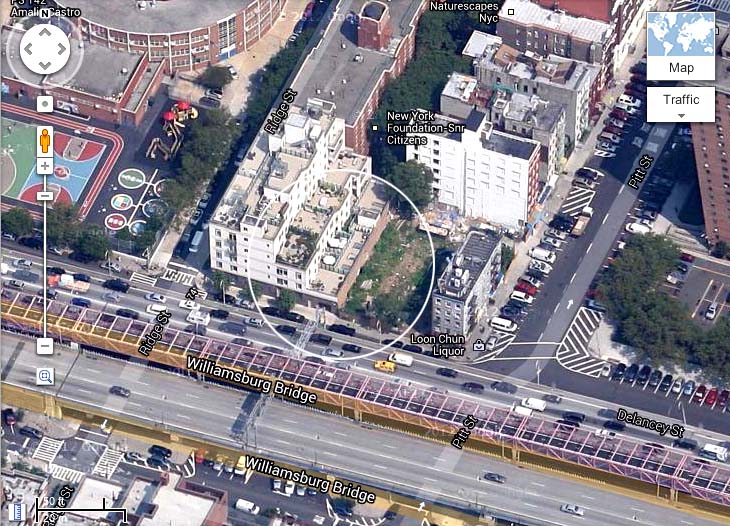
And another view from Google Street View along the bridge. 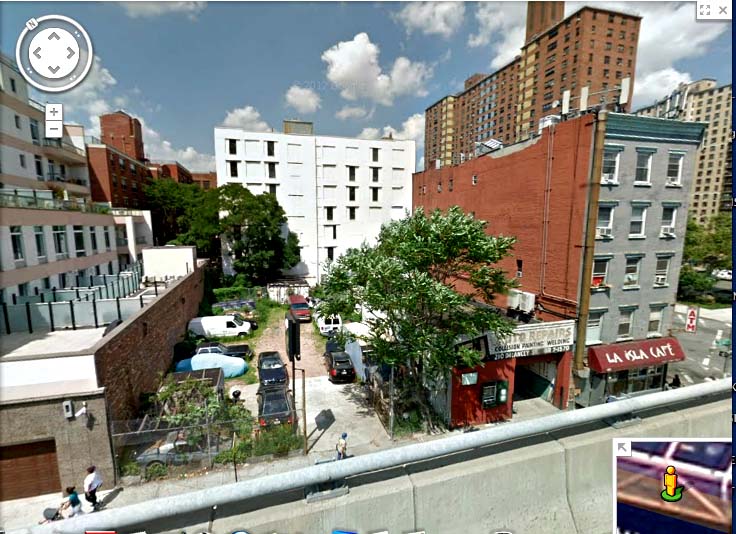
One building from that era, though not in the Hopper drawing (it's off to the right), survives at the corner of Delancey and Pitt. 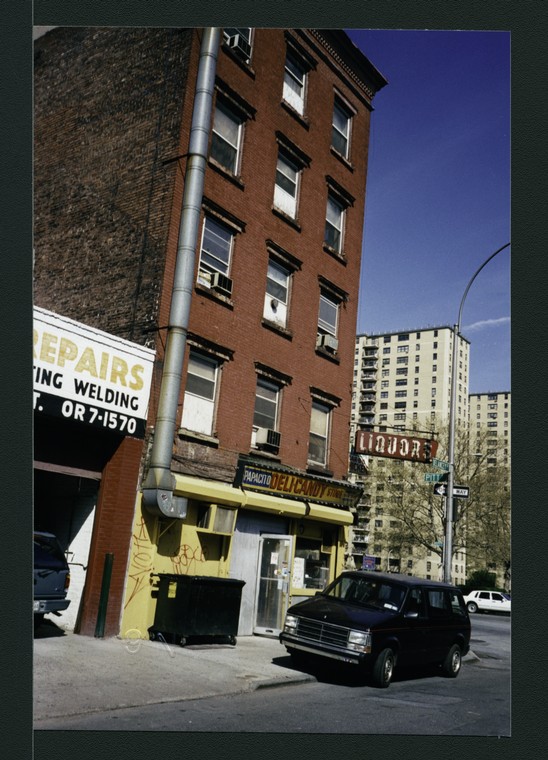
Here, Marie matched it up from the old photograph we saw before. 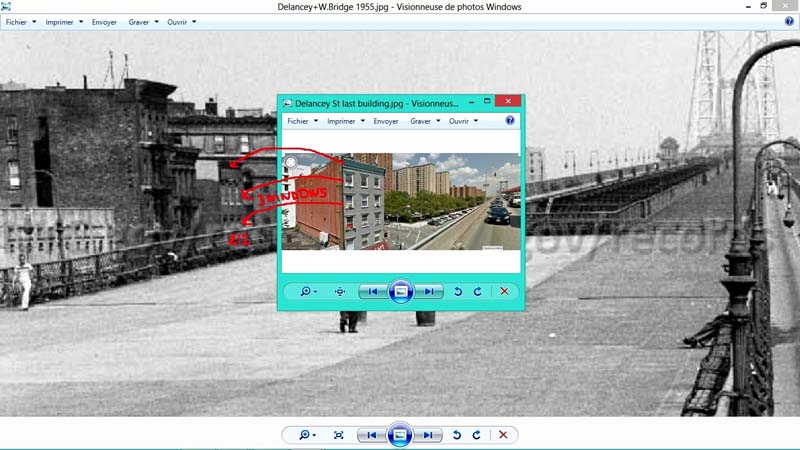
If you want to take the short walk up the Williamsburg Bridge to see where the buildings were, here's how to do it. You start at the entrance below. The entrance is all that remains from the wider entrance of years ago. 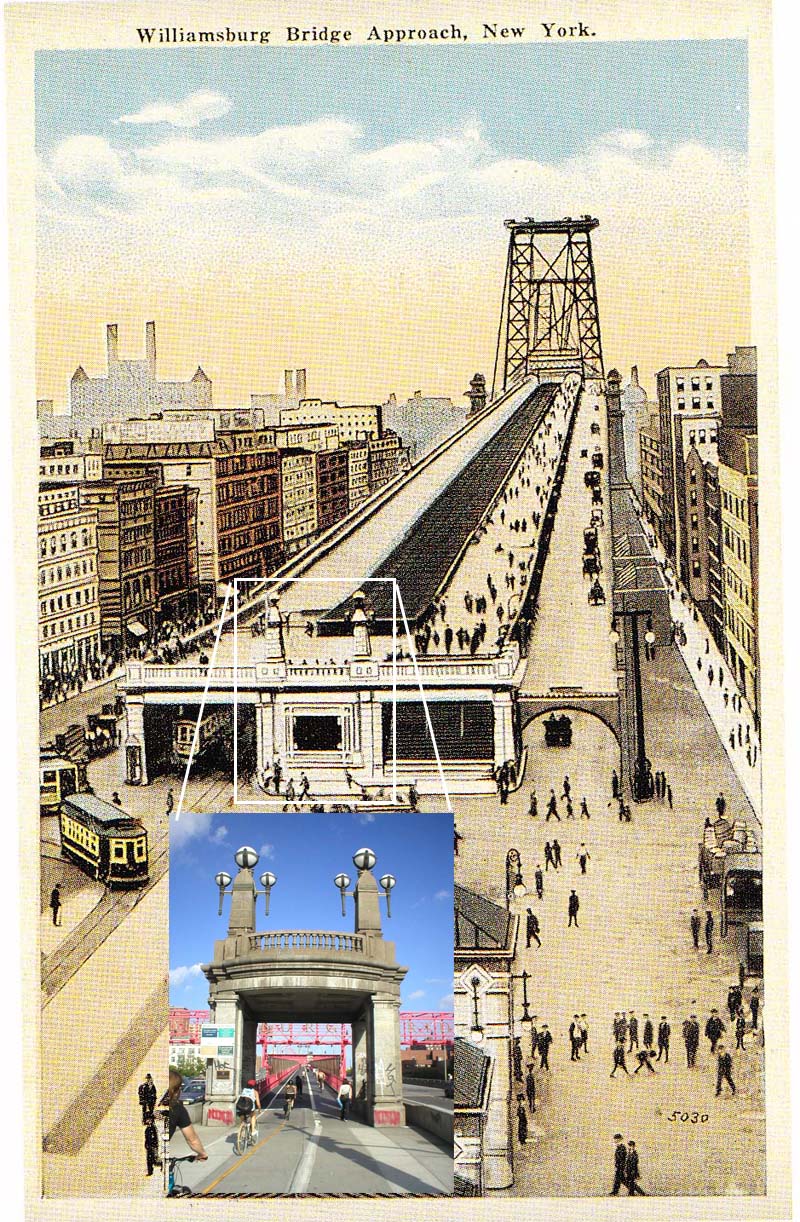
There's also a lot of speeding bicyclists, coming down a 1/2 mile straightaway, so stay to the side. 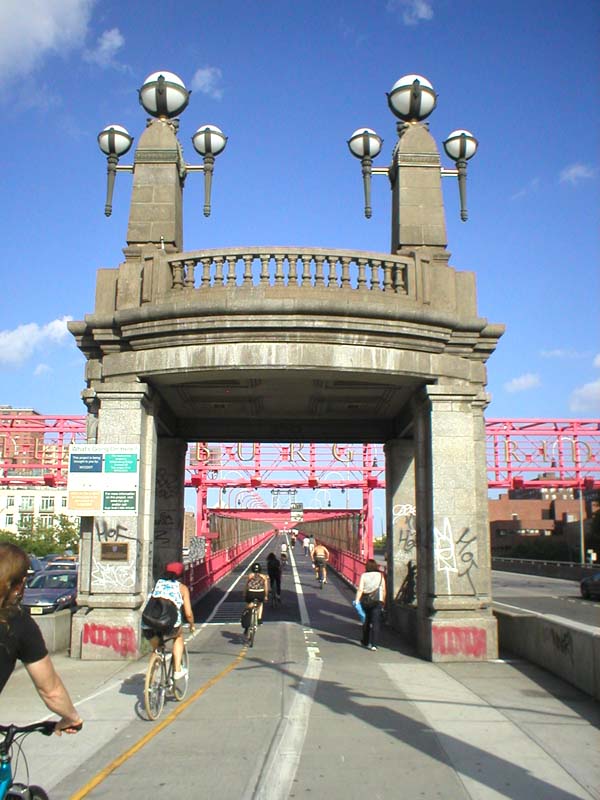
You can't miss the sign for the Williamsburg Bridge. If you turn to your immediate left, you will see two buildings with similar tops as those in the painting, still around from that era. Walk up about 100 yards (91 meters) until you see this sign on your right. Pan left.... ...keeping panning left... ...and you will be there! You'll also see the building that still survives at the corner of Pitt Street... That was this one, just to refresh your memory. 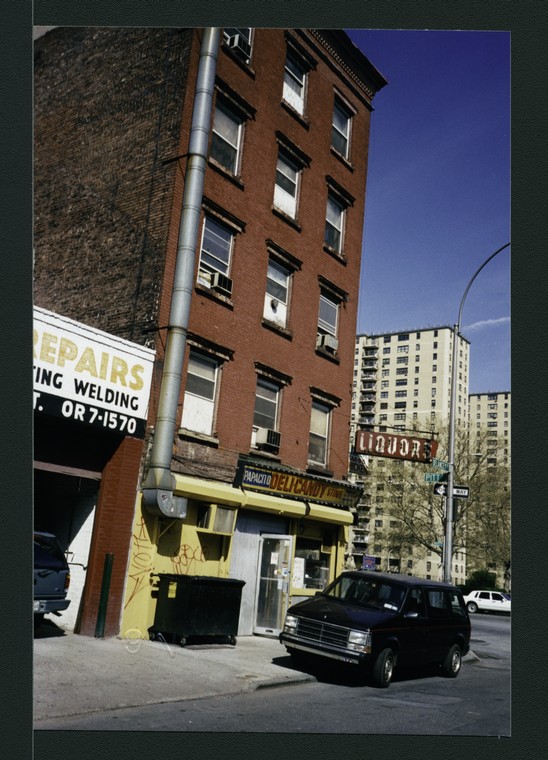
Here again is a shot from pretty much the same angle as Hopper would have seen it... ...and here I added the buildings from Hopper's painting; so you too can see what Hopper saw back in 1928 looking north "From Williamsburg Bridge." 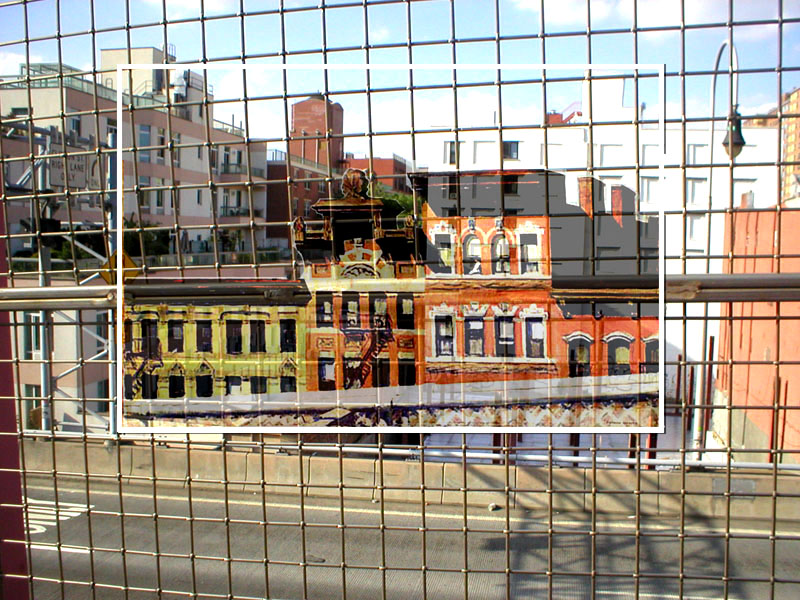
Thanks for touring with us and thanks again, Marie! 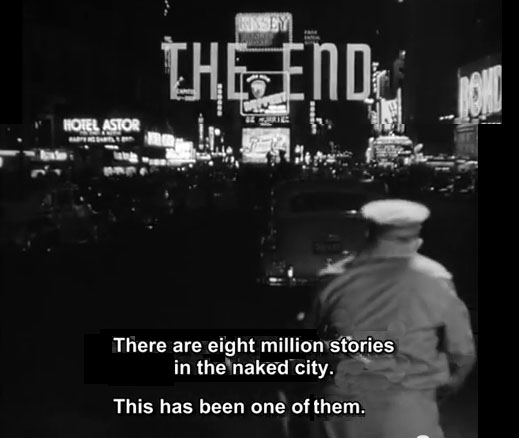
|
||
